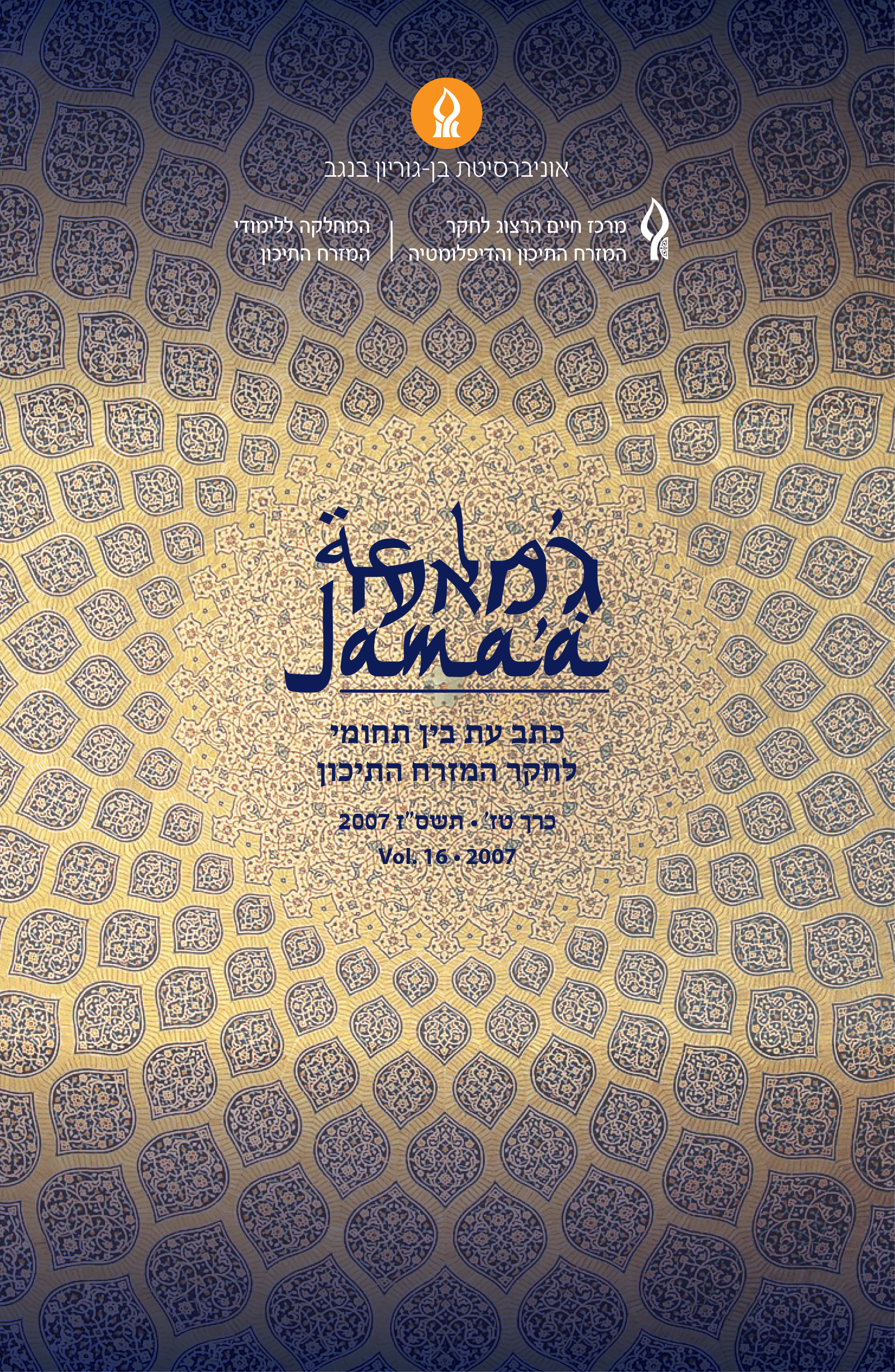עיונים בכתב העת אל-אסלאם ואל-תסוף
אסלאם, סופיות ומודרנה במצרים המהפכנית
DOI:
https://doi.org/10.64166/v4cd5093תקציר
מאז ימי מוחמד עלי (1848-1805) אוחדו כל המסדרים הסופיים במצרים תחת קורת גג אחת: מועצת המסדרים הסופיים העליונה. בשנים 1958-1961 הוציא ראש הגוף הזה, השיח' מוחמד מחמוד עלואן, ירחון בשם אל-אסלאם ואל-תסוף (האסלאם והסופיות). פעילותו חודשה ב-1970, הפעם בשם אל-תסוף אל-אסלאמי (הסופיות האסלאמית). השיח' עלואן יזם את הוצאתו של כתב עת זה, מימן את הפקתו ואף ערך אותו. כתב העת ייצג את פיסתה של מועצת המסדרים הסופיים אשר לתפקיד הסופיות בהקשר המודרני ואת דעתה של המועצה על מקומם של המסדרים בחברה המצרים ועל תפקידם בהקשר המהפכני. כמו כן, הציג את התיקונים שביקשה המועצה לערוך בדרך פעולתם הטקסית והפומבית של המסדרים. הכותבים בכתב העת השתייכו לגופים שונים, כגון מועצת המסדרים הסופיים העליונה, מכללת אל-אזהר, הממסד הפוליטי והעילית האינטלקטואלית. מאמר זה מבקש לבחון את הדרכים שבהן הובנה השיח הסופי כשיח מודרני הרלוונטי לחברה המצרית המהפכנית. דרך העיון בכתב העת אל-אסלאם ואל-תסוף בכוונתי לבחון כיצד יוצגו בו המודרניזציה והמהפכה, ובדרך זו לבחון כיצד ניסה המשטר לקדם את האידיאולוגיה המהפכנית דרך שימוש במסגרת הזהות הסופית וכיצד ניסתה מועצת המסדרים הסופיים העליונה, ארגון שקדם למהפכה, לשמר את מעמדה ומקומה של הסופיות בחברה המצרים גם לאחריה.
References
Downloads
פורסם
גיליון
מדור
License
Copyright (c) 2007 ג'מאעה: כתב עת בינתחומי לחקר המזרח התיכון

This work is licensed under a Creative Commons Attribution-NonCommercial 4.0 International License.





